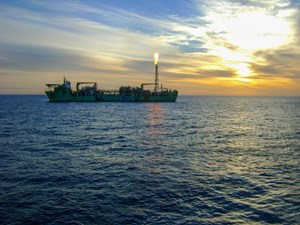Guyana won’t approve oil exploration near Venezuela until United Nations rules in Venezuelan border dispute
(Bloomberg) --Guyana won’t approve oil exploration in waters near Venezuela at least until the United Nations’ highest court rules on the countries’ borders, a government official said.
Venezuela’s maritime claim rests north of a projected 70-degree line out to sea from Punta Playa on the border with Guyana. The Guyanese government, along with most of the international community, rejects that claim, and the matter is being considered by the International Court of Justice in The Hague. Venezuela rejects the court’s authority.
Even so, Guyana will restrict oil-related activities to south of that unverified border to avoid inflaming the situation, the official, Natural Resources Minister Vickram Bharrat, said in an interview.
The minister’s comments come amid growing rhetoric from Venezuelan President Nicolas Maduro on his claims to the Essequibo region, which makes up about two-thirds of Guyana’s land territory. Exxon Mobil Corp. has been accelerating development of massive oil discoveries off the Guyanese coast that are transforming the sparsely populated South American nation in recent years. The Texas oil giant produces about 645,000 bpd from Guyanese waters, up from nothing five years ago.
“Because of our respect for international rule of law and the International Court of Justice, we’ve refrained from issuing approvals to Exxon to do any exploration activities above that 70 degree line,” he said. “We will hold off on that at least until that decision is made formally. We are not a country that is in the habit of aggravating any situation.”
The part of the Stabroek Block north of Venezuela’s projected 70-degree line is under force majeure, Exxon country manager Alistair Routledge said in an interview.
“We can’t access it, we can’t follow through on our obligations or our rights until such time as that force majeure is lifted” by the Guyanese government, he said. “We’re not going to push to do activity in that area.”
Exxon last accessed the area in 2018 to conduct seismic surveys but exited after encountering Venezuelan vessels.



